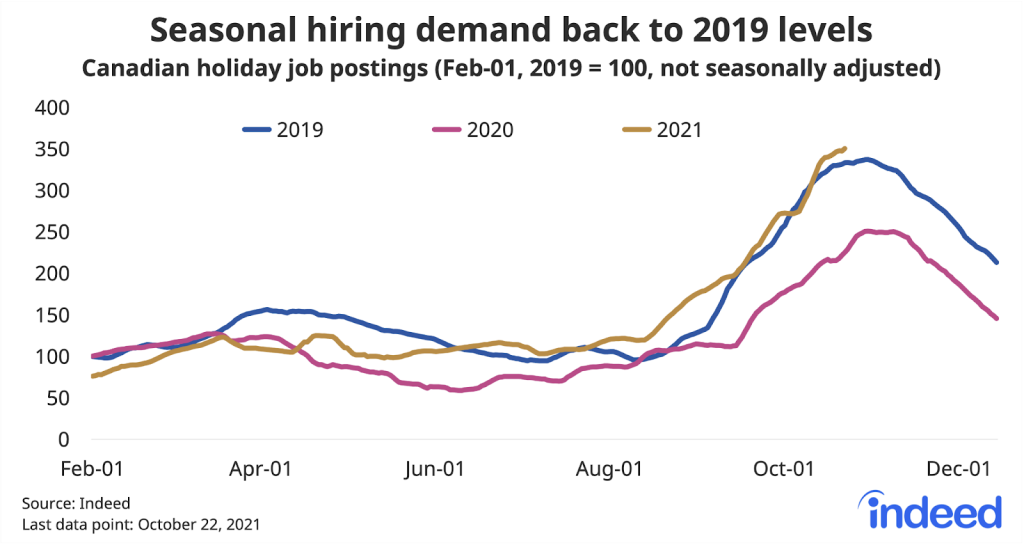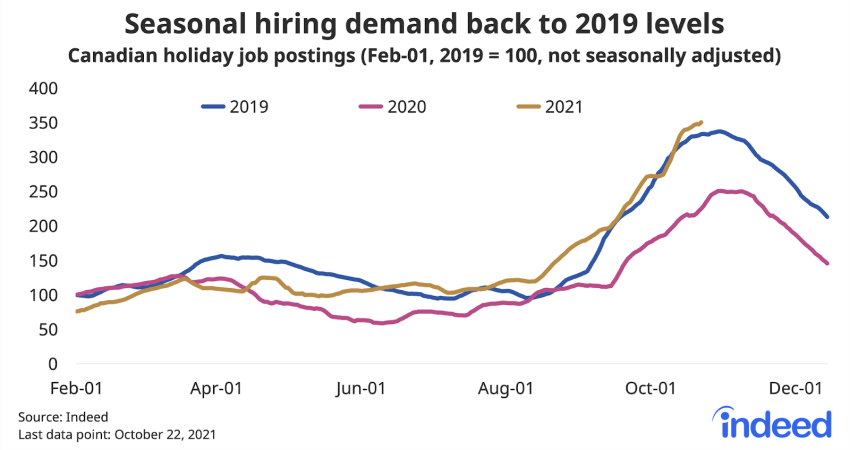1. Introduction
In today’s ever-changing business landscape, managing labor demands can be a challenging task. With the constant fluctuations in workload and seasonal demands, it is crucial for organizations to have a reliable and skilled workforce in place. That’s where labor supply agencies and temporary staffing services come into play. These agencies specialize in providing businesses with flexible staffing solutions, helping them meet their labor requirements in a cost-effective and efficient manner. From skilled trades recruitment to industrial workforce solutions, these agencies offer a wide range of services to ensure that businesses have access to the manpower they need, when they need it. In this blog, we will explore expert tips and strategies for navigating seasonal labor demands, and how partnering with a reputable labor supply company can be the key to mastering the ebb and flow of workforce needs. Grab your pen and take notes, because this is the ultimate guide to managing labor demands like a pro.
2. Understanding seasonal labor demands

Understanding the patterns and trends of seasonal labor demands is essential for effectively managing your workforce. Businesses in different industries experience varying levels of demand throughout the year, and being aware of these fluctuations can help you anticipate your staffing needs.
One of the first steps in understanding seasonal labor demands is analyzing historical data. Look at the past few years’ data to identify any recurring patterns or peak seasons. For example, if you run a retail business, you may notice a significant increase in customer traffic during the holiday season.
Additionally, it’s important to consider external factors that may influence your labor demands. For instance, a construction company may experience higher labor needs during the summer months when the weather is favorable for outdoor projects.
By understanding the seasonal nature of your business, you can strategically plan your workforce. This can involve hiring temporary workers during peak seasons or adjusting the hours and schedules of your existing employees to accommodate fluctuations in demand.
In the next section, we will discuss effective strategies for forecasting and planning your workforce to meet seasonal labor demands. Stay tuned to learn how you can proactively manage your staffing needs and maximize productivity during busy periods.
3. Assessing your business needs
To effectively navigate the ebb and flow of seasonal labor demands, it is crucial to assess your business needs. Start by evaluating the specific requirements of your industry and identifying the areas where you experience the highest demand fluctuations.
Take into account any changes in customer behavior, market trends, or external factors that may impact your staffing needs. For example, if you operate a landscaping business, you may need additional workers during the spring and summer months when there is a surge in demand for planting and lawn maintenance services.
Once you have a clear understanding of your business needs, you can start developing a plan to address them. This may involve creating a flexible workforce, where you have a core team of permanent employees and supplement them with temporary or seasonal workers during peak periods.
Additionally, consider investing in training and upskilling programs for your existing workforce. By equipping your employees with the necessary skills, you can optimize their productivity and minimize the need for additional hires.
In the following section, we will delve into effective recruitment and hiring strategies for meeting seasonal labor demands. Stay tuned for valuable insights on finding the right talent at the right time.
4. Effective recruitment strategies for seasonal workers
When it comes to meeting seasonal labor demands, finding the right talent at the right time is crucial for your business. Implementing effective recruitment strategies can ensure that you have a reliable pool of skilled workers who are ready to meet the surge in demand during peak periods.
One of the most effective ways to recruit seasonal workers is by establishing strong partnerships with local staffing agencies or industry-specific organizations. These organizations often have a network of candidates who are seeking temporary or seasonal employment. By tapping into their resources, you can save time and effort in finding qualified candidates.
Another strategy is to create a talent pipeline by proactively engaging with potential candidates throughout the year. This can be done through job fairs, industry events, or even online platforms. By building relationships with prospective employees and keeping them updated on future opportunities, you can ensure a steady supply of qualified candidates when you need them.
Additionally, consider leveraging technology tools such as online job boards and social media platforms to attract a wider pool of potential candidates. These platforms allow you to reach a larger audience and provide an efficient way to promote your job openings.
In the next section, we will explore strategies for effectively managing and retaining seasonal workers once they are hired. Stay tuned for valuable tips on ensuring their engagement and productivity during peak periods.
5. Training and onboarding seasonal staff
Once you have successfully recruited your seasonal workers, it is important to invest time and effort in training and onboarding them effectively. By providing them with the necessary knowledge and skills, you can ensure that they are productive and valuable assets during peak periods.
Start by developing a comprehensive training program that covers not only the specific tasks and responsibilities of the job but also any safety protocols or company policies. Provide clear instructions and demonstrate tasks whenever possible to help them understand expectations and perform their duties with confidence.
Consider assigning experienced employees or mentors to support and guide the seasonal staff, especially during the initial days. This will help them acclimate to the work environment and provide them with a source of guidance if they have any questions or need assistance.
Utilize technology tools such as online training modules or video tutorials to supplement your training efforts. These resources can be easily accessible and provide a consistent training experience for all seasonal staff members.
Furthermore, ensure that all necessary paperwork and documentation are completed accurately during the onboarding process. This includes employment contracts, tax forms, and any other legal requirements specific to your industry or region.
Remember to communicate the company’s values, mission, and expectations to the seasonal staff. Make them feel included and part of the team by introducing them to other employees and encouraging collaboration and teamwork.
By investing in training and onboarding, you can set your seasonal staff up for success and maximize their contribution to your business during peak periods. In the following section, we will explore strategies for effectively managing and supervising seasonal workers to ensure their engagement and productivity. Stay tuned for more valuable tips!
6. Managing and retaining seasonal employees
Managing seasonal employees can be a unique challenge due to their temporary nature, but with the right strategies in place, you can maximize their productivity and retain top talent.
First and foremost, establish clear expectations from the beginning. Clearly communicate performance standards, deadlines, and any key metrics they will be evaluated on. This will help them understand what is expected of them and strive towards meeting or exceeding those expectations.
Regular and open communication is crucial in managing seasonal employees. Schedule regular check-ins to provide feedback, address any concerns or issues, and offer guidance and support. Encourage an open-door policy where they feel comfortable approaching you with any questions or problems that may arise.
Recognize and reward outstanding performance. Whether it’s through verbal praise, small incentives, or even performance-based bonuses, acknowledging and appreciating their hard work will not only boost morale but also motivate them to continue performing at their best.
Invest time in building a strong team culture. Organize team-building activities or social events to foster camaraderie and a sense of belonging among permanent and seasonal employees. This will help create a positive work environment where everyone feels valued and connected.
Lastly, be proactive in retaining your seasonal employees. Keep them informed of any potential opportunities for extended or future employment, and foster a supportive and engaging work experience that encourages them to return in the future.
In the final section of this series, we will explore strategies for evaluating your seasonal labor needs and planning for the long-term success of your business. Stay tuned for valuable insights on managing the ebb and flow of your labor demands!
7. Adapting to the ebb and flow: Flexibility and scalability
As a business owner or manager, it’s essential to be prepared for the ever-changing demands of seasonal labor. One of the key elements in successfully navigating seasonal labor demands is being flexible and scalable in your approach.
During peak seasons, assess your workforce needs and consider implementing flexible scheduling options. This could include offering additional shifts, extended working hours, or even implementing staggered work schedules. By doing so, you can effectively manage increased demand, distribute workload evenly, and ensure that your customers receive the level of service they expect.
On the other hand, during slower periods, it’s crucial to scale back your labor force without compromising productivity. One approach is to incorporate cross-training among your permanent employees. This ensures that they can adapt to different roles and responsibilities when needed, allowing you to optimize your workforce during fluctuating demands.
Moreover, consider partnering with temporary staffing agencies to quickly fill gaps in staffing during busy seasons. These agencies can provide you with access to a pool of pre-screened candidates who can help meet your temporary labor needs.
By maintaining flexibility and scalability within your labor management strategy, you’ll not only be better equipped to handle the ebb and flow of seasonal labor demands but also improve overall workforce productivity and efficiency. Stay tuned for our final installment where we’ll discuss long-term strategies for managing seasonal labor demands effectively.
8. Planning for future labor demands
Planning for future labor demands is crucial for any business to thrive and stay ahead of the competition. Understanding past labor trends and analyzing historical data can provide valuable insights for making informed decisions regarding your workforce.
One effective strategy is to create a labor forecast based on previous seasonal patterns and industry projections. By doing so, you can anticipate peak periods and low seasons and develop a proactive plan for managing your labor needs. This could include hiring additional staff well in advance, implementing training programs to upskill existing employees, or exploring automation options to streamline processes during busy periods.
Additionally, establishing strong relationships with your temporary staffing agencies can help you stay prepared for unexpected surges in demand. By maintaining open communication and sharing your labor forecasts, these agencies can assist you in quickly securing qualified temporary staff and support your business during peak seasons.
Investing in technology and workforce management systems can also greatly benefit your business in managing seasonal labor demands. These tools offer real-time data analysis, scheduling optimization, and labor forecasting capabilities, helping you make more accurate decisions when it comes to staffing your business.
In conclusion, mastering the ebb and flow of seasonal labor demands requires a proactive and strategic approach. By analyzing historical data, creating labor forecasts, building relationships with staffing agencies, and leveraging technology, you can effectively navigate the challenges and optimize your workforce to meet the demands of each season. Stay tuned for our final installment where we’ll provide additional tips and insights on improving labor management efficiency.
9. Conclusion: Thriving in the face of seasonal labor demands

In conclusion, successfully navigating the ever-changing landscape of seasonal labor demands is essential for any business striving to remain competitive. By leveraging the strategies and insights shared in this blog series, you can position yourself to thrive even during the busiest or slowest times of the year.
Remember to analyze past labor trends and historical data to create accurate labor forecasts. This will enable you to anticipate peak periods and low seasons, making informed decisions about your workforce. Building strong relationships with temporary staffing agencies is also crucial, as they can quickly provide qualified temporary staff during unexpected surges in demand.
Investing in technology and workforce management systems can significantly improve your labor management efficiency. These tools offer real-time data analysis, scheduling optimization, and labor forecasting capabilities, helping you make more accurate staffing decisions.
By implementing these strategies and staying proactive, you can confidently handle the ebb and flow of seasonal labor demands, ensuring that you always meet the needs of your business and ultimately achieve long-term success. Thank you for following our blog series on mastering seasonal labor demands. Stay tuned for more valuable insights and industry tips.
